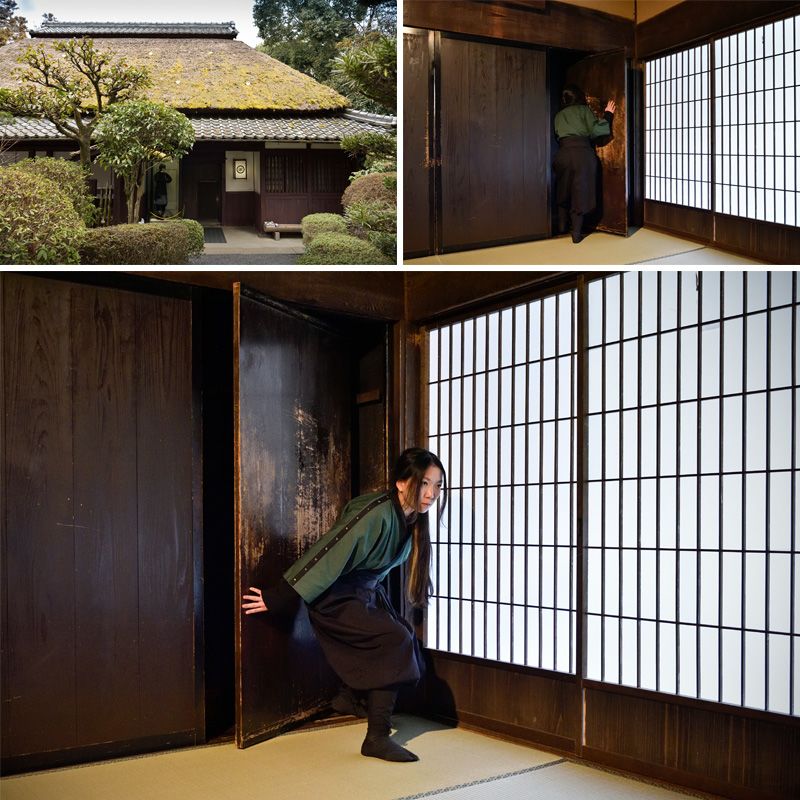
According to his legend, Ishikawa’s father was killed by the shogun’s men, which prompted him to take an anti-authoritarian stance and begin his training in ninjutsu. He was born around 1558, although the location and his real name are uncertain. The information we have on the real historical figure is sparse. Centuries later, he turned into a beloved character of kabuki and puppet theater, ensuring that Ishikawa Goemon became one of the most renowned ninja in the country, regardless of whether or not he actually warranted that moniker. However, with time, his story became wildly popular and his feats were exaggerated to the point where Ishikawa attained the rank of a folk hero. In fact, the earliest historical mentions of him label Ishikawa simply a bandit, not a shinobi.

Like Fuma Kotaro, Ishikawa Goemon did not match the traditional view of the ninja. However, he had planned for this event, and had previously established secret signals with his men, so the undercover operatives were easily identified and executed. Later on, some of Takeda’s men tried to get revenge by using the same trick on Kotaro and infiltrating his own clan. Eventually, this triggered a frenzied fight where the soldiers killed a lot of their own confederates.

Several nights in a row, he and his men would infiltrate the Takeda camp and cause chaos by releasing the horses, setting fires, kidnapping people, all the while dressed like Takeda soldiers and using their battlecry so they could not distinguish friend from foe. He employed psychological warfare to great effect. Kotaro’s most notorious moment came in 1581, when he was tasked with weakening the forces of the Takeda Clan in anticipation of the Battle of Ukishimagahara.

Serving the Hojo Clan during the late 16th century, the Fuma Clan consisted of up to 200 covert agents who acted as thieves, bandits, and pirates who disrupted the operations of their enemies. He was not the first leader of the clan, but he was the one who took it to the height of its power. Now let’s ignore what we’ve just said and focus on a ninja group that did not come from either of those regions – the Fuma Clan of Sagami Province, led by Fuma Kotaro.
Iga ninja village professional#
The practice of ninjutsu was mainly developed in two regions, each one with its own school, that churned out professional ninjas, specially trained for this purpose. Fuma KotaroĬontrary to popular belief, ninjas were not ubiquitous throughout the whole of Japan. When Tokugawa became shogun, Hattori and his ninjas served as his private guards at Edo Castle, and later morphed into a sort of feudal secret agency called the Oniwabanshu. Some said that he was able to see into the future, others that he could teleport. Nicknamed the Demon Hanzo, Hattori soon turned into a mythological figure as tales of his exploits spread throughout the country. When his ninja skills were required, Hattori assembled a group of shinobi and saved Tokugawa’s life by escorting him out of dangerous, enemy territory. When it was time for battle, Hattori distinguished himself as a unit commander at the Battles of Mikatagahara and Anegawa and the Siege of Odawara. He was also never a mercenary, instead serving the Tokugawa Clan for most of his life, basically fulfilling whatever role was needed of him.

What makes him particularly interesting was that Hattori had also been a renowned samurai, showing that the two roles were never quite as distinct as one would expect. We might as well start off with the most famous ninja on our list – Hattori Hanzo of Iga Province, who was instrumental in helping Tokugawa Ieyasu become shogun and unify Japan.


 0 kommentar(er)
0 kommentar(er)
